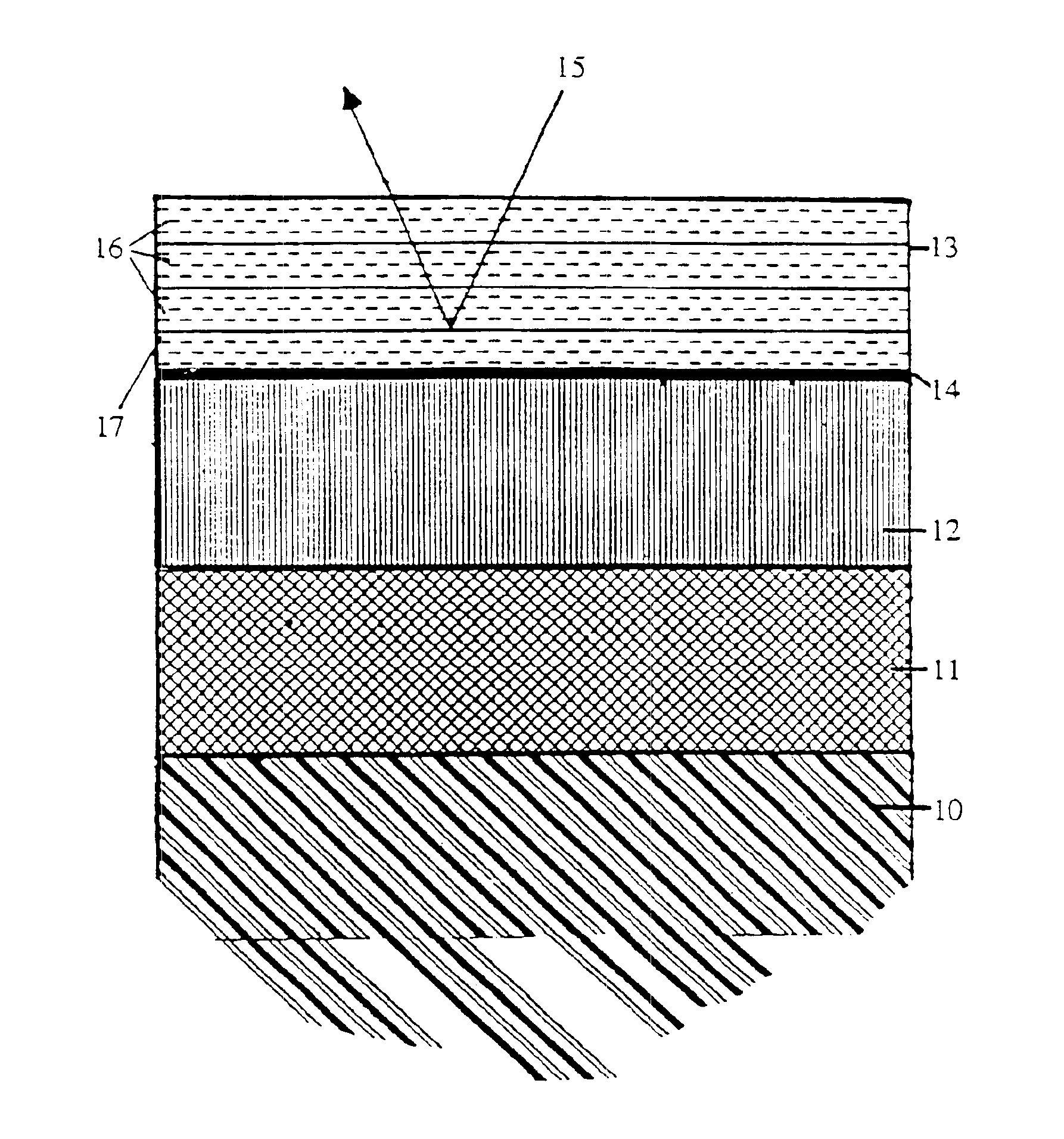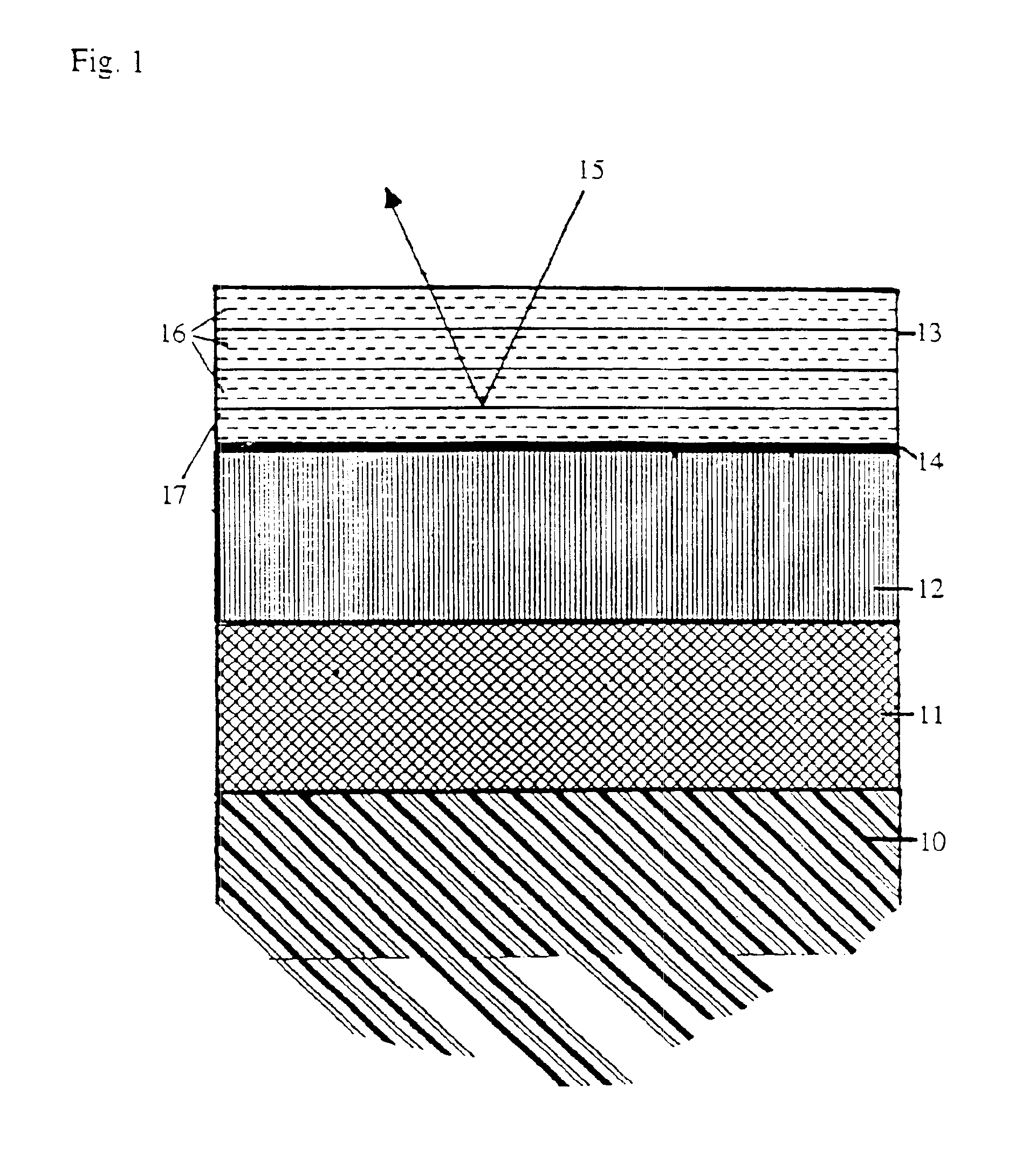Reflector with resistant surface
a technology of reflective surfaces and reflective coatings, applied in the field of reflective coatings, can solve the problems of loss of energy, high purity, and increased precautions with increasing thickness of oxide coatings,
- Summary
- Abstract
- Description
- Claims
- Application Information
AI Technical Summary
Benefits of technology
Problems solved by technology
Method used
Image
Examples
example
[0071]1. A pre-treatment layer is deposited on an aluminium strip in a continuous process. For that purpose an aluminium strip (Al 99.8, Ra 0.08 μm), 500 mm wide and 0.3 mm thick is continuously anodised at 40 m / min. In that process the strip is exposed to the following treatments:[0072]a) Degreasing at pH 9-9.5, at approx. 50° C. and bonder V6150 / 01,[0073]b) rinsing with tap water (room temperature),[0074]c) anodising in 20% H2SO4 at 85° C. and 20V,[0075]d) rinsing in tap water at 50° C. and[0076]e) rinsing in deionised water at approx. 85° C.
[0077]The strip bearing the pre-treatment layer, in the present example the pre-anodised strip, is coated with the functional layer at 40 m / min in a coil coating process and counter-flowing immersion and deposition rolls and dried in a continuous oven at an oven temperature of 200 to 250° C. for approx. 10 to 15 sec. The temperature of the metal (measured using thermoelements on the non-coated substrate) was between 195 and 216° C.
[0078]The ri...
PUM
| Property | Measurement | Unit |
|---|---|---|
| thickness | aaaaa | aaaaa |
| thickness | aaaaa | aaaaa |
| thickness | aaaaa | aaaaa |
Abstract
Description
Claims
Application Information
 Login to View More
Login to View More - R&D
- Intellectual Property
- Life Sciences
- Materials
- Tech Scout
- Unparalleled Data Quality
- Higher Quality Content
- 60% Fewer Hallucinations
Browse by: Latest US Patents, China's latest patents, Technical Efficacy Thesaurus, Application Domain, Technology Topic, Popular Technical Reports.
© 2025 PatSnap. All rights reserved.Legal|Privacy policy|Modern Slavery Act Transparency Statement|Sitemap|About US| Contact US: help@patsnap.com


